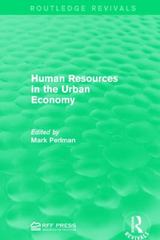Question
The components of the Phillips curve show the A direct relationship between the short-run and the long-run aggregate supply B inverse relationship between the rate
The components of the Phillips curve show the
A direct relationship between the short-run and the long-run aggregate supply
B inverse relationship between the rate of inflation and the unemployment rate
C inverse relationship between the short-run and the long-run aggregate supply
D direct relationship between the rate of inflation and the unemployment rate
In relation to the Phillips curve, if wages and prices are completely flexible then
A the LM curve will be horizontal.
B the Phillips curve will be vertical.
C the IS curve will be vertical.
D the Phillips curve will be horizontal.
In relation to the Phillips curve, a decrease in the natural rate of unemployment will
A shift the Phillips curve to the left.
B shift the Phillips curve to the right.
C result in an increase in the inflation rate along the Phillips curve
D result in a decrease in the inflation rate along the Phillips curve.
One situation that will cause the short run Phillips curve to shift to the right is
A if there is a decrease in the unemployment rate
B if there is an increase in the expected inflation rate.
C if there is a favorable supply shock.
D if there is a decrease in the expected inflation rate.
A sudden drop in output, and a sudden increase in price, of oil will likely
A shift the Phillips curve to the right
B move the economy along the Phillips curve toward less unemployment
C shift the Phillips curve to the left
D move the economy along the Phillips curve toward less inflation
The short-run Phillips curve:
A is vertical
B has a positive slope
C has a negative slope
D is horizontal
The long-run Phillips curve:
A has a negative slope
B is horizontal
C Is vertical
D has a positive slope
Assume that there is a predictable inflation and unemployment rate tradeoff in an economy.A stable Phillips curve would be likely to react in which manner:
A shifts aggregate demand through fiscal and monetary policy has the effect of shifting the Phillips curve
B shifts in aggregate demand through fiscal and monetary policy will move along the slope of the curve
C an expansionary fiscal policy can shift the curve to the right
D a tight money policy can shift the curve to the right
Long run stability for an economy is achieved when the Phillips curve is at:
A the natural rate of unemployment
B the natural rate of inflation
C showing a high rate of profit
D the efficiency trade-off between unemployment and inflation
Increases and decreases in aggregate demand, when viewed through the relationship between the short-run and long-run Phillips curve suggests that shifting aggregate demand
A influences the real output and employment in the long run , but not in the short run
B does not influence real output and employment in the short run but only the price level.
C influences the real output and employment in the short run , but not in the long run
D does not influence the price level in the short or long run but only real output and employment
Step by Step Solution
There are 3 Steps involved in it
Step: 1

Get Instant Access to Expert-Tailored Solutions
See step-by-step solutions with expert insights and AI powered tools for academic success
Step: 2

Step: 3

Ace Your Homework with AI
Get the answers you need in no time with our AI-driven, step-by-step assistance
Get Started


